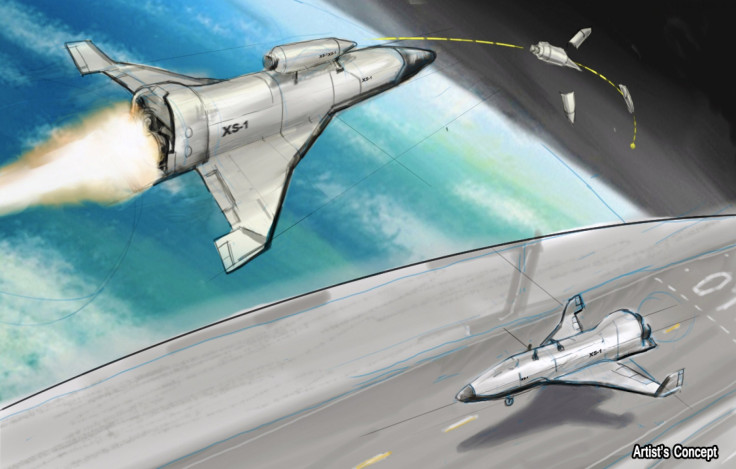DARPA Announces New Experimental Spaceplane, XS-1, To Launch Satellites Into Orbit
DARPA has announced an experimental spaceplane program that hopes to address the enormous cost of launching satellites. The XS-1 could be easily maintained and reusable and, according to DARPA, “with costs, operation and reliability similar to traditional aircraft.”

The Defense Advanced Research Projects Agency, DARPA, outlines the need for new satellites, which provide vital information for national security, but launching this equipment requires some expensive vehicles that are used only a handful of times per year. These satellite launch vehicles require years of planning and cost hundreds of millions of dollars, but the XS-1 program could drastically reduce the cost, and time, of launching new satellites into orbit.
The XS-1 is envisioned as “aircraft-like” and would be reusable, with a maintenance crew for any repairs or setup. Launches would not be restricted to one location and there would be no need for any costly infrastructure to house the spaceplane. Jess Sponable, DARPA program manager in charge of the XS-1 project, said in a statement, “We want to build off of proven technologies to create a reliable, cost-effective space delivery system with one-day turnaround. How it’s configured, how it gets up and how it gets back are pretty much all on the table — we’re looking for the most creative yet practical solutions possible.”
DARPA envisions the project could serve multiple purposes, including testing the feasibility of technology that could be used in future space missions or as part of hypersonic flight. The XS-1 would be designed with a main body, capable of hypersonic speeds to reach suborbital altitude, and an outer layer that would be shed with the deployment of the satellite. The main body would return to Earth and be prepared for the next launch.
The technical goals DARPA hopes to achieve include “flying 10 times in 10 days, achieving speeds of Mach 10+ at least once and launching a representative payload to orbit. The program also seeks to reduce the cost of access to space for small (3,000- to 5,000-pound) payloads by at least a factor of 10, to less than $5 million per flight.” DARPA is also developing the Airborne Launch Assist Space Access, ALASA, program for smaller satellites, around 100 pounds, at a cost of $1 million per launch.
© Copyright IBTimes 2025. All rights reserved.






















